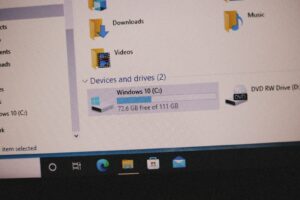Interactive site shows how the Scottish city has reduced pollution in some of its busiest bus corridors.
The first phase of Glasgow’s low emission zone (LEZ) was introduced in 2018. Ahead of the start of the second phase on 1 June, the Scottish Environment Protection Agency (SEPA) has published an online tool so that everyone can see the significant progress made.
By the end of 2018, 24% of buses operating in the city met the strictest EURO VI emissions standard. As of this year, they all do. In fact, some operators have also gone well beyond this standard with their electric vehicles.
The results on air quality have been dramatic, as the ‘Glasgow’s Low Emissions Zone’ online tool clearly shows.
In 2018, there were 1,148 hours in which levels of nitrogen oxide exceeded 100 micrograms per m3. By 2022, that had been cut to just 68 hours.
The interactive map and charts allow users to dig into the impact on air quality in different parts of the city.
Dr Andrew Malby from SEPA says, ‘Phase one of Glasgow’s LEZ focused on the city’s buses and, using data collected by Glasgow City Council and bus operators, we’ve been able to show the improvements in air quality as the fleet underwent significant improvements.
‘While the focus has been along bus corridors, improvements are also now required in all other areas of the city centre. This will be achieved during the next phase of the LEZ when all vehicles are required to meet emission standards.’
Glasgow’s LEZ has been developed through partnership between SEPA, Glasgow City Council, Transport Scotland and public transport operators.
Cllr Angus Millar, City Convener for Transport and Climate, says: ‘Poor air quality presents a serious risk to public health and so the LEZ is an essential measure if Glasgow is to tackle the harmful air pollution that has dogged parts of the city centre for decades.
‘Glasgow is the first of Scotland’s four biggest cities to introduce a low emission zone, but we are joining hundreds of cities across Europe where similar initiatives are already making a positive impact. Expansion of Glasgow’s LEZ to cover all vehicle types will further tackle harmful and dirty air in our city centre, ensuring it’s a safer and more pleasant place to live, work and visit.
‘With the success of the bus phase, it’s clear that expansion to include all types of vehicles will allow us to maximise the LEZ’s air quality benefits.’
In the second phase due to begin next month, all petrol-driven vehicles entering the city centre zone must meet Euro IV emissions standards and all diesel-driven vehicles must meet Euro VI. Those that do not will be subject to penalty charges.
‘While up to 90% of vehicles entering the zone will be unaffected by the LEZ,’ says Cllr Millar, ‘restricting access to the remaining minority of vehicles that pollute the most is vital to protect public health.’
In related news, a self-driving fleet of five buses now serves a 14-mile route in Scotland, seven days a week.
Photo by Phil Reid.

















Leave a Reply